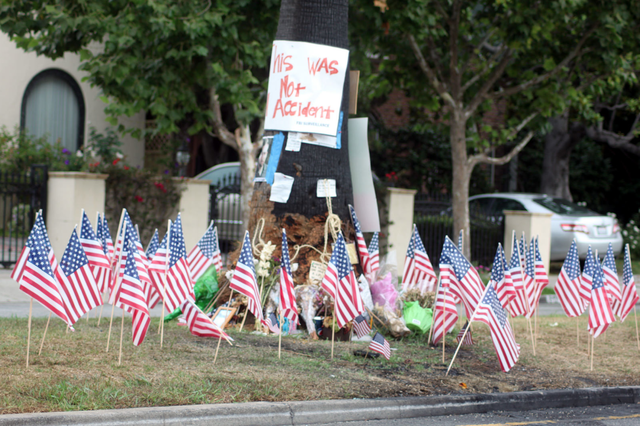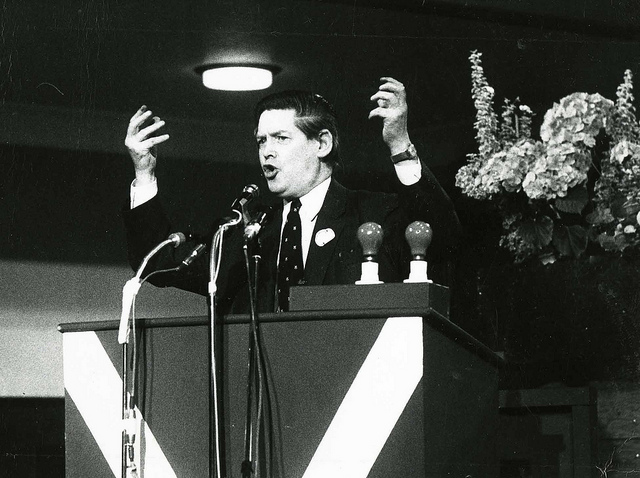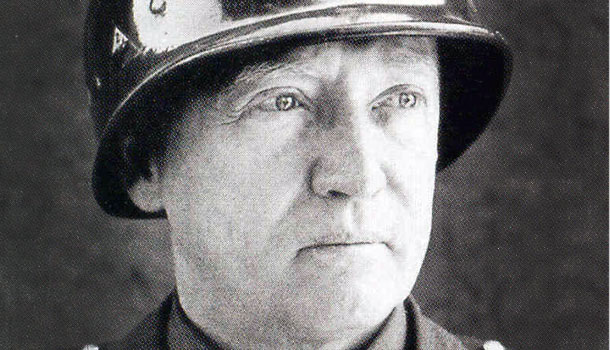10Kyle Peterson
According to Kyle Peterson’s mother, the 29-year-old was unhappy with certain aspects of his life in early 2014. Her son often talked about quitting his job and moving away. However, his roommate and other friends said that Peterson was excited for an upcoming trip to California. On February 24, 2014, Peterson was driving his SUV in Troutdale, Oregon, when he took his eyes off the road to check his cell phone and veered into a guardrail. Peterson got out of the car and waited for the police to arrive. When they did, he was cooperative. Witnesses said he looked shaken, but unharmed. Then Peterson started acting strangely. First, he got back in the car and started revving the engine. The officers backed away from the vehicle and Peterson eventually stopped. He then got out of the car and ran into a heavily wooded area near the scene of the crash. That was the last time anyone saw him. In the days that followed, a search group of over 100 people, including a dive team, combed the area, but there was no trace of Peterson. Kyle Peterson is currently still missing and his family are continuing the search.
9Michael Hastings
Michael Hastings was an investigative reporter who first gained prominence while covering the Iraq War for Newsweek. While there, his fiance was killed in a roadside bombing. He wrote a memoir in her honor and then went to stay a month with General Stanley McChrystal, the commander of NATO forces in Afghanistan. His profile of McChrystal, which was published in Rolling Stone, was called “The Runaway General.” The article showcased McChrystal’s apparent dislike of the civilian government, leading to his resignation. Hastings received an award for excellence in journalism. His next major piece was “Why Democrats Love To Spy On Americans,” a condemnation of the Obama Administration and the NSA’s wiretapping scandal. The article was published on June 7, 2013. Sadly, it would be his last article. On June 18, 2013, at about 4:25 in the morning, Hastings’s Mercedes C250 Coupe was seen in the Hancock Park neighborhood of Los Angeles. The car was apparently going so fast that sparks were coming off it. It slammed into a palm tree and burst into flames, killing Hastings. His body was burned beyond recognition and had to be identified through fingerprints. While this could have been nothing more than a tragically horrific accident, people close to Hastings started saying things that suggested it might have been more than a simple car crash. For example, shortly before his death, Hastings emailed colleagues and friends saying he was onto something big and needed to lie low for a while. He also gave them a warning that the FBI might be talking to them. It eventually emerged that Hastings was doing a profile of CIA Director John O. Brennan. One theory is that someone remotely seized control of Hastings’s car and drove it into the tree. This was given additional credibility by Richard Clarke, the former National Coordinator for Security, Infrastructure Protection, and Counter-Terrorism. He said that the circumstances surrounding the crash were consistent with someone taking control of the car. The FBI has denied any investigation into Hastings. His brother has also said that Hastings’s death wasn’t some government conspiracy—he believes his brother had a manic episode.
8Geoffrey Wilson
Over the 2013 Memorial Day weekend, 29-year-old Calgary native Geoffrey Wilson was in St. Louis for a friend’s wedding. On the night of May 24, Wilson and a friend went to a bar. At about 3:00 AM, Wilson told his friend that he was going to get his rented SUV. When Wilson didn’t return, his friend assumed he had left without him and took a cab to his motel. However, a few minutes after Wilson left the bar, someone called 911 to report that an SUV had collided with a fire hydrant. When the police arrived on the scene they found Wilson barely breathing in the driver’s seat. He had suffered massive internal injuries, including broken ribs and ruptured kidneys and spleen. He also had a large bruise on his back. He was rushed to the hospital, but succumbed to his injuries without regaining consciousness. The police have suggested that Wilson, whose blood alcohol was twice the legal limit, likely started the car, left it in neutral, got out and walked to the fire hydrant, and was crushed when the car rolled back and pinned him against the hydrant. He then somehow unpinned himself and climbed back into the front seat of the car, where he finally blacked out. Wilson’s family disagrees, arguing that there are just too many unanswered questions. How did he get back in the car if he was trapped between the SUV and the fire hydrant? The family instead believes that he was the victim of foul play, and that police should be doing more to investigate that angle.
7Patricia Meehan
On April 20, 1989, 37-year-old Patricia Meehan was involved in a head-on collision with another motorist near Circle, Montana. After she got out of the car, she looked dazed, walked away from the accident, crossed a field, and climbed over a fence near the highway. That was the last time anyone definitely saw her. After the accident, she never called her family or friends. No one knows for sure what happened to her. Meehan’s parents believe that she developed amnesia as a result of the accident and started hitchhiking. There have since been around 60 sightings of her across the Pacific Northwest, and the family feels that at least five of them were genuine sightings of Meehan. A strange twist occurred when a homeless woman in Seattle was arrested for littering and authorities noticed a striking resemblance to Meehan. The woman gave her name as Morning Star and had no identification on her. Since this was 1990, no DNA tests were performed. However, Patricia’s parents confirmed that Morning Star was not their daughter after talking to her over the phone. Twenty-five years after her disappearance, Meehan’s whereabouts remain unknown.
6The Oldnall Road Car Crashes
Oldnall Road is a short stretch of country lane in the West Midlands area of England. Termed a “black spot” by nearby residents, the seemingly innocuous stretch of road has been home to a strange series of accidents. Drivers claimed to have seen the ghostly figure of a young girl wearing Victorian clothes, which forced them to swerve and caused the accidents. In 2008, paranormal researchers stepped in, claiming there was no logical explanation for why the crashes kept happening. The sightings seem to have died down in recent years—but the road is no safer. In December 2011, there were four car accidents in three days. The police said that the road was slippery due to the weather—but the drivers said that the road wasn’t frost-covered when they were driving.
5Grateful Doe
On June 26, 1995, there was a horrible crash near Emporia, Georgia. A Volkswagen Vanagon had veered off the road and slammed right into a pair of trees. The two passengers, who weren’t wearing seat belts, were launched partially through the windshield, killing both. The driver and owner of the car was identified as 21-year-old Michael Hager. The car’s passenger had no identification on him and none of Hager’s friends or family knew who he was or even that Hager was traveling with anyone. The mysterious passenger’s face was too damaged to release a picture to the media. All the police could say for sure was that he was between the ages of 15 and 21. The only things in his pockets were four quarters, a lighter, and ticket stubs for a two-day concert by the Grateful Dead, which took place on June 24 and June 25 in Washington, D.C. Hager had been visiting his girlfriend in Fairfax, Virginia. On his way home, he stopped at his father’s house in Gloucester County, but his father wasn’t home. Then he set off toward his mother’s house in Ingram, South Carolina. It is suspected that he picked up a hitchhiker shortly after leaving his father’s house and crashed a little while later, after he fell asleep at the wheel. The young Grateful Dead fan has not been identified. A facial reconstruction, pictured above, has been released by the Center for Missing and Exploited Children in the hope that someone will recognize him.
4Willie McRae
Scottish lawyer Willie McRae was a legend in his own lifetime, attracting tall tales about his supposed friendship with Indira Gandhi or role in drafting the constitution of Israel. A powerful character, he smoked 80 unfiltered cigarettes a day and could drink like a fish without appearing to get drunk. He was a prominent lawyer in Glasgow, a powerful anti-nuclear campaigner, and a senior figure in the Scottish National Party. But while Willie McRae’s life might have been remarkable, his death was even stranger. The beginning of the end came on April 4, 1986, when McRae’s apartment caught fire. The fire department was called by neighbors and successfully extinguished the blaze, which McRae said had started when he fell asleep with a lit cigarette in his mouth. McRae himself was found passed out from smoke inhalation, but declined medical attention and seemed to have recovered well. He left Glasgow the next day, telling neighbors he was going to stay at his cottage in Kintail while the damage was repaired. During the journey, he apparently stopped to replace a flat tire before continuing on to the cottage. Around 10:00 AM the next morning, two Australian tourists found McRae’s body in his car, which was straddling a creek a short distance from the road. The Australians stopped the next car, which happened to contain a doctor and another member of the Scottish National Party. They opened the car door and found McRae with his hands folded in his lap and blood on his right temple. The injuries seemed consistent with a car crash and no one saw any reason to suspect foul play. The police started cleaning up the scene. About six hours later, an X-ray revealed a bullet lodged in McRae’s brain. He never woke up. The death was eventually ruled a suicide. By that point, the scene of McRae’s death had been irrevocably compromised. Police began to search for the gun, which was not found during the initial cleanup. It was eventually found some distance from where the car had been. If McRae shot himself in the head, how could he throw the gun away and then fold his hands in his lap, all while driving the car? The gun had no fingerprints on it and there was no real evidence that McRae owned it, other than the statement of an acquaintance who subsequently disappeared. Other witnesses asserted that McRae was in the process of writing a tell-all book on the British nuclear industry. So did McRae kill himself—or was he possibly murdered by some unknown assassin?
3Christene Skubish
On June 24, 1990, 24-year-old Christene Skubish was driving along Highway 50 near Sacramento with her three-year-old son Nick. Suddenly, Christene’s car went over the side of the road, sliding 12 meters (40 ft) below the embankment and colliding with a tree. The crash was so horrific that it tore the roof off the car. The vehicle sat there for five days while authorities searched for the mother and son. The accident wasn’t discovered until a couple saw the body of a naked woman lying on the ground near the accident. When the police arrived, they found the car, with Nick naked in the passenger seat. He was suffering from hypothermia and dehydration, but he was alive. Skubish on the other hand, had died almost instantly when the tree they hit collapsed on her—making it impossible for her to be the naked woman that the couple saw. There was some evidence that Nick had made it to the road, but the witnesses were adamant that they saw a naked woman and not the toddler. Some people believe it was the ghost of Christene, trying to save her son.
2George S. Patton
George S. Patton was one of the most famous and most colorful generals in the history of the United States Army. But his illustrious career came to a sudden end on December 8, 1945. On the fateful day, Patton was going on a pheasant hunt near Speyer, Germany. The general was in the back of his 1938 Cadillac Model 75, along with his chief of staff, Major-General Hobart Gay. They were being driven by Private Horace Woodring. The trio had just crossed a set of train tracks when a heavy-duty military GMC truck turned unexpectedly in front of the car. Woodring immediately slammed on the brakes and turned sharply to the left. Despite this attempt at evasion, the Cadillac still hit the truck, albeit at a slow speed. Woodring and Gay received minor wounds, but the 60-year-old Patton slammed into the glass partition, cutting his head open and breaking his neck. Patton was rushed to hospital, where he spent 12 days in spinal traction. After initially seeming on the road to recovery, he passed away from a pulmonary edema and congestive heart failure on December 21. While this could have just been a tragic accident, there are some odd circumstances surrounding his death, which have led some to speculate that the general might have been murdered. One theory is that Patton was targeted by his own government. According to this theory, Patton was going to release details about collusion between the Allies and the Soviet Union which resulted in the deaths of a number of Americans. The Office of Strategic Services (OSS), the American espionage agency which was the forerunner of the CIA, then supposedly ordered the hit on Patton. His death was set up by a highly decorated war hero, Douglas Bazata. According to Bazata’s own confession, he staged the crash and had Patton shot with a low-velocity object in order to break his neck, making it look like he was killed in the accident. When he survived, Bazata claims that the OSS allowed the NVKD (which would later become the KGB) to finish the job with poison. The theory that Patton was poisoned was backed up by Stephen Skubik, a US Army counter-intelligence officer. Skubik supposedly told the head of the OSS, William “Wild Bill” Donovan, that Stalin wanted Patton dead, but he claims that his warnings were ignored. While it may be easy to dismiss Bazata as an attention-seeker, he was actually a genuine war hero and a respected figure in American politics. During his time in the military, he received the Distinguished Service Cross, four Purple Hearts, and three French Croix de Guerre. After the war, he was a celebrated artist before going into politics, serving as an aide to Navy Secretary John Lehman. He died in 1999. There are other strange circumstances surrounding Patton’s death. Documents about the accident are missing from the archives. No autopsy was performed on the body. When investigating a car accident, it’s usual to examine the vehicle involved. Historian Robert Wilcox and an expert on Cadilliacs went to the Patton Museum and discovered the car they have on display was not the car that Patton was in when the accident occurred.
1Princess Diana
The death of Princess Diana was one of the most shocking tragedies of the ’90s. Many people remember where they were and what they were doing when they heard about her death. The future Princess of Wales was born Diana Spencer on July 1, 1961 and married Prince Charles on July 29, 1981. However, the marriage started to fall apart in the early ’90s and both Diana and Charles started seeing other people while they were still married. Their divorce was finalized in 1996, after a bitter media battle between Diana and the Royal Family. After her marriage, she dated heart surgeon Hasnat Khan. They broke up in May 1997 and within a month she started seeing Dodi Al-Fayed, whom she met when his father, Egyptian billionaire Mohamed Al-Fayed, hosted Diana and her sons at his compound in the south of France. On the night of the crash, Dodi and Diana left Sardinia in a private jet and landed in Paris at 3:20 PM. In Paris, the couple were hounded by the paparazzi, who followed them to the Hotel Ritz. The couple tried to dine in the hotel’s restaurant, but their dinner was interrupted by photographers and they were forced to dine in Dodi’s private room. While waiting for them to finish their dinner, the head of hotel security, Henri Paul, was seen having two drinks of his favorite liquor. Shortly after midnight, the couple decided to travel the short distance to Dodi’s apartment. Henri Paul hatched a plan to send a decoy car out to the front of the hotel, before sneaking the couple out of the back in an unmarked Mercedes. Around 12:20 AM, Diana sat in the backseat on the driver’s side and Dodi got in beside her. Their bodyguard, Trevor Rees-Jones, was in the front passenger seat, while Paul drove. Minutes later, the Mercedes had just entered the Alma tunnel when it slammed head-on into the tunnel’s 13th pillar. Al-Fayed and Paul were killed instantly while Diana and Rees-Jones were seriously injured. Photographers immediately pounced on the scene, preventing rescue workers from getting to the victims. An hour later, Diana’s ambulance finally reached the hospital, but she had already had a heart attack. She was pronounced dead at the hospital. Of course, when a young and controversial person dies, there are going to be questions about the death. There are plenty of theories about what actually happened. One popular idea is that another car caused the crash. On the Mercedes, police found white paint specks from a Fiat Uno, but French authorities have never been able to locate the car. Despite there being about 10 cameras along the way to the tunnel and 14 in the tunnel itself, there is no footage of the Mercedes or the crash. Another prominent theory claims that a bright flash caused Paul to swerve into the pillar. Three witnesses testified that they saw such a flash immediately before the crash. However, this one is often controversial, since many other witnesses didn’t see any flash. If a flash was bright enough to blind Paul, everyone in the tunnel should have noticed. The most prominent supporter of the theory that the couple was murdered is Mohamed Al-Fayed, who has claimed that they were assassinated by MI6. However, both a French investigation and an English inquest have concluded that Paul was drunk, which led to the crash. His blood alcohol was three times the legal limit at the time of the accident. Al-Fayed has recently stopped campaigning publicly for a murder investigation out of respect for Diana’s children, Prince William and Prince Harry. Robert Grimminck is a Canadian crime-fiction writer. You can follow him on Facebook or Twitter or you can visit his website. One of Robert’s lists can also be found in Listverse.com’s Epic Book of Mind-Boggling Lists.




















